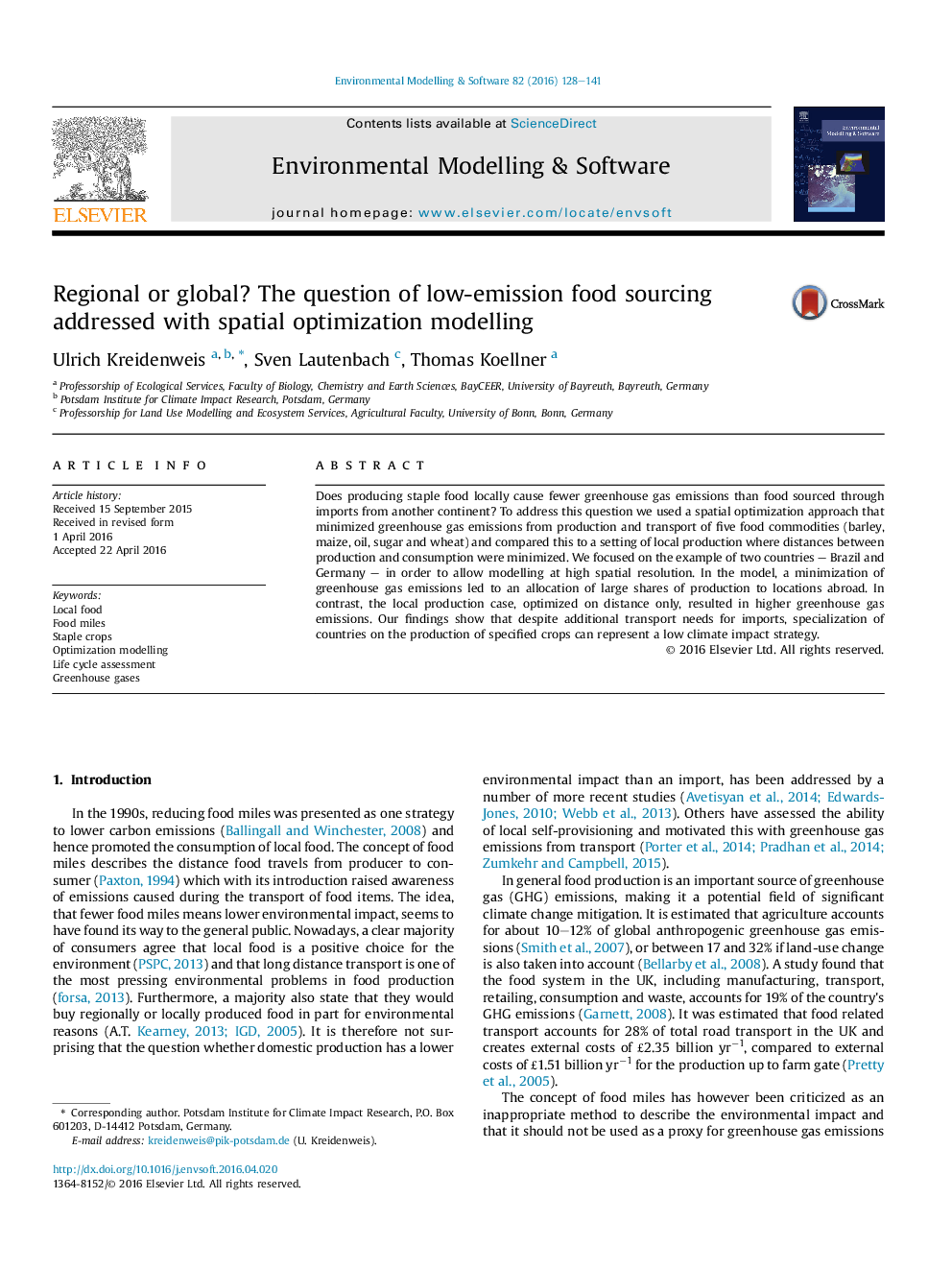| Article ID | Journal | Published Year | Pages | File Type |
|---|---|---|---|---|
| 6962441 | Environmental Modelling & Software | 2016 | 14 Pages |
Abstract
Does producing staple food locally cause fewer greenhouse gas emissions than food sourced through imports from another continent? To address this question we used a spatial optimization approach that minimized greenhouse gas emissions from production and transport of five food commodities (barley, maize, oil, sugar and wheat) and compared this to a setting of local production where distances between production and consumption were minimized. We focused on the example of two countries - Brazil and Germany - in order to allow modelling at high spatial resolution. In the model, a minimization of greenhouse gas emissions led to an allocation of large shares of production to locations abroad. In contrast, the local production case, optimized on distance only, resulted in higher greenhouse gas emissions. Our findings show that despite additional transport needs for imports, specialization of countries on the production of specified crops can represent a low climate impact strategy.
Keywords
Related Topics
Physical Sciences and Engineering
Computer Science
Software
Authors
Ulrich Kreidenweis, Sven Lautenbach, Thomas Koellner,
